Paul Bishop's Blog, page 49
January 23, 2015
ANNE PERRY ~ THE REIGNING QUEEN OF LITERARY OF MYSTERIES
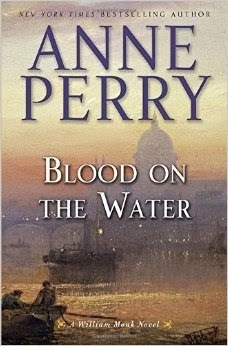 ANNE PERRY ~ THE REIGNING QUEEN OF LITERARY OF MYSTERIES
ANNE PERRY ~ THE REIGNING QUEEN OF LITERARY OF MYSTERIESI often use this column to expound on books in the pulp or hardboiled genres, however, my reading tastes are actually wide, varied, and eclectic. When I want a literary mystery with both depth and strong characterization, I never hesitate to pull an Anne Perry novel off the shelf. There are plenty to choose from as Perry’s output is prodigious. Her Thomas and Charlotte Pitt series started with 1979’s The Cater Street Hangman and now runs to thirty titles. Her William and Hester (Latterly) Monk series began in 1990 with The Face of a Stranger, and saw its twentieth title, Blood on the Water, recently published. Her shorter Christmas novels started being published in 2003 with A Christmas Journey and have continued yearly through the most recent, A New York Christmas. In between all of these words, she has also produced five novels in a separate series – Reavley – set during WWI, two complex and lengthy fantasy novels, four novels in her young adult Timepiece series, a number of standalone novels, and has contributed award winning short stories to numerous anthologies. Whew!
 What is even more astonishing than her output is the consistent quality and the amount of research involved in each effort. Perry is a true master of the mystery genre, yet this is not what sets her apart from other writers who also wear that mantle. Perry has no equal when it comes to an understanding of the many sides of social issues and the complexities of human nature and interaction. Often, her historical situations mirror modern counterparts, showing how little true social progress has been made – what affected society in the Victorian era, WWI, and today are too frequently little different. Perry’s novels do not shy away from the harshest of subject matters, exploring them without prurient focus, yet still laying them bare in an emotionally gripping manner. Perry’s gift goes beyond the concoction of a Gordian knot of mystery to a much more important dissection of humanity. Actions have consequences in Perry’s novels, often far reaching and disastrous for her characters, yet redemption is also possible. While I’m partial to her William and Hester Monk novels, I also always enjoy her Thomas and Charlotte Pitt series, and her Christmas tales – which often put secondary or minor characters from those other two series front and center. The Monk mysteries are set early in the Victorian era (1850s – 1860s) and the Pitt books twenty to thirty years later (1880s – 1890s), but the true difference between the series is Perry’s consummate skill in creating two similar sets of sleuths, yet imbuing them with completely different voices. If they ever crossed paths, Pitt and Monk would recognize each other as kindred spirits – as would Hester and Charlotte – yet the reader would never confuse the individual voices of the four characters. We first meet Thomas Pitt as a detective with the London Metropolitan police. Through thirty books, we follow his career through the police and on to the creation of Special Branch, responsible for the investigation of treason and anarchy and threats to the Crown. In the first book in the series, The Cater Street Hangman, Pitt investigates the murders of several young women in the streets near the wealthy Ellison family home. His investigation leads him into the sphere of Charlotte, the Ellison’s progressive, strong-willed daughter, who longs to break free of stifling convention. While educated, Pitt is the son of a gamekeeper and a cook – hardly a likely match for a high society daughter of a wealthy family. However, Pitt’s ability to engage Charlotte in useful and interesting discussions binds her to him. Despite the convention of the times, the duo go on in the series to marry, have children (who grow and progress with the series), and find themselves bringing their individual gifts and circumstances into the solving of the mysteries. Somehow, Perry manages to keep Charlotte’s involvement in the stories pivotal while also believable, a feat few mystery writers can accomplish. In William Monk, Perry has created an enigma. Monk is a man without a past, or at least one he can remember. A coach accident in 1856, causes Monk to lose his memory - a fact he keeps secret to save his job as a policeman. The issue, however, is more than memory. Monk has also lost his original ruthless personality. He is a man who has made many enemies on his way up the promotional ladder, and now he no longer knows friend from foe. In coming to terms with the, hopefully better, man he has now become, and dealing with the harsh realities of a past haunting his every step, Monk meets Hester Latterly, a Crimean War nurse returned to London. Despite their initial irritation with each other, they became close, with her being the only one who knows about Monk's memory issues. Hester is an amazing character, her background on the battlefield giving her quite a different world view than that of Charlotte Pitt. Her work with Monk comes into even greater play when Monk is fired from the police and is forced to become a private investigator. The series, however, comes into its own when Monk takes advantage of an opportunity to return to police work as head of the (Thames) River Police.
What is even more astonishing than her output is the consistent quality and the amount of research involved in each effort. Perry is a true master of the mystery genre, yet this is not what sets her apart from other writers who also wear that mantle. Perry has no equal when it comes to an understanding of the many sides of social issues and the complexities of human nature and interaction. Often, her historical situations mirror modern counterparts, showing how little true social progress has been made – what affected society in the Victorian era, WWI, and today are too frequently little different. Perry’s novels do not shy away from the harshest of subject matters, exploring them without prurient focus, yet still laying them bare in an emotionally gripping manner. Perry’s gift goes beyond the concoction of a Gordian knot of mystery to a much more important dissection of humanity. Actions have consequences in Perry’s novels, often far reaching and disastrous for her characters, yet redemption is also possible. While I’m partial to her William and Hester Monk novels, I also always enjoy her Thomas and Charlotte Pitt series, and her Christmas tales – which often put secondary or minor characters from those other two series front and center. The Monk mysteries are set early in the Victorian era (1850s – 1860s) and the Pitt books twenty to thirty years later (1880s – 1890s), but the true difference between the series is Perry’s consummate skill in creating two similar sets of sleuths, yet imbuing them with completely different voices. If they ever crossed paths, Pitt and Monk would recognize each other as kindred spirits – as would Hester and Charlotte – yet the reader would never confuse the individual voices of the four characters. We first meet Thomas Pitt as a detective with the London Metropolitan police. Through thirty books, we follow his career through the police and on to the creation of Special Branch, responsible for the investigation of treason and anarchy and threats to the Crown. In the first book in the series, The Cater Street Hangman, Pitt investigates the murders of several young women in the streets near the wealthy Ellison family home. His investigation leads him into the sphere of Charlotte, the Ellison’s progressive, strong-willed daughter, who longs to break free of stifling convention. While educated, Pitt is the son of a gamekeeper and a cook – hardly a likely match for a high society daughter of a wealthy family. However, Pitt’s ability to engage Charlotte in useful and interesting discussions binds her to him. Despite the convention of the times, the duo go on in the series to marry, have children (who grow and progress with the series), and find themselves bringing their individual gifts and circumstances into the solving of the mysteries. Somehow, Perry manages to keep Charlotte’s involvement in the stories pivotal while also believable, a feat few mystery writers can accomplish. In William Monk, Perry has created an enigma. Monk is a man without a past, or at least one he can remember. A coach accident in 1856, causes Monk to lose his memory - a fact he keeps secret to save his job as a policeman. The issue, however, is more than memory. Monk has also lost his original ruthless personality. He is a man who has made many enemies on his way up the promotional ladder, and now he no longer knows friend from foe. In coming to terms with the, hopefully better, man he has now become, and dealing with the harsh realities of a past haunting his every step, Monk meets Hester Latterly, a Crimean War nurse returned to London. Despite their initial irritation with each other, they became close, with her being the only one who knows about Monk's memory issues. Hester is an amazing character, her background on the battlefield giving her quite a different world view than that of Charlotte Pitt. Her work with Monk comes into even greater play when Monk is fired from the police and is forced to become a private investigator. The series, however, comes into its own when Monk takes advantage of an opportunity to return to police work as head of the (Thames) River Police.
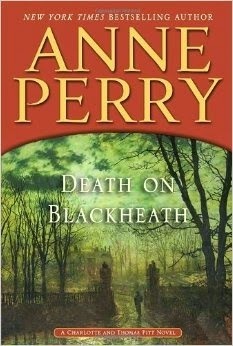 Monk, Pitt, Hester, and Charlotte are fully realized characters, who I would recognize in an instant were I to meet them on the street. However, the added charm and complexity of the worlds Perry has created in these series are the many secondary characters – the lawyer Sir Oliver Rathbone, Monk’s second in command Orme, Pitt’s second in command Stoker, the river orphan Scuff, and the wonderful Lady Vespasia Cumming-Gould to name but a few. To spend time with these characters is to be taken on a thinking readers’ journey. While driven by intense dialogue, the novels are dense with atmosphere and challenge, drawing willing readers to get lost in the pages. I have also found the audio versions of Perry’s books to be among the best available, brilliantly performed by talented and engaging readers who bring Perry’s words and characters to fully realized life. To butcher a cliché, I admit to wearing my admiration for Anne Perry on my sleeve. Her difficult early life experiences appear to have produced a writer who has thought long and hard about the world and humanities’ place in it. For me, she is a joy to read and a writer with qualities to which I aspire.
Monk, Pitt, Hester, and Charlotte are fully realized characters, who I would recognize in an instant were I to meet them on the street. However, the added charm and complexity of the worlds Perry has created in these series are the many secondary characters – the lawyer Sir Oliver Rathbone, Monk’s second in command Orme, Pitt’s second in command Stoker, the river orphan Scuff, and the wonderful Lady Vespasia Cumming-Gould to name but a few. To spend time with these characters is to be taken on a thinking readers’ journey. While driven by intense dialogue, the novels are dense with atmosphere and challenge, drawing willing readers to get lost in the pages. I have also found the audio versions of Perry’s books to be among the best available, brilliantly performed by talented and engaging readers who bring Perry’s words and characters to fully realized life. To butcher a cliché, I admit to wearing my admiration for Anne Perry on my sleeve. Her difficult early life experiences appear to have produced a writer who has thought long and hard about the world and humanities’ place in it. For me, she is a joy to read and a writer with qualities to which I aspire.
Published on January 23, 2015 13:49
January 11, 2015
AVAILABLE NOW ~ FIGHT CARD MMA: BLOOD FEUD
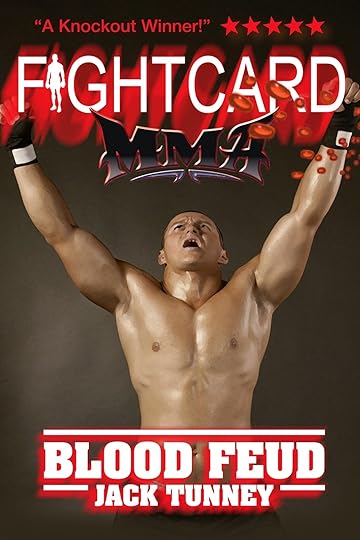 AVAILABLE NOW ~ FIGHT CARD MMA: BLOOD FEUD
AVAILABLE NOW ~ FIGHT CARD MMA: BLOOD FEUDTIM TRESSLAR WRITING AS JACK TUNNEY ...
FIGHT CARD MMA: BLOOD FEUD
Dubai, 2015…David Garrett never could walk away from a fight. Even when a covert mission to nab a terrorist went wrong, leaving fellow CIA agents dead and Garrett holding the bag, he had to be forced to stand down. Angry and disillusioned, he returned to his native Chicago where he engaged in off-the-books bouts for money, settled scores and made new enemies. Still, the unfinished business eats at him. Then Melissa, his former lover and fellow CIA agent, surfaces. She tells him one of the men responsible for the debacle in Iraq has surfaced. Like Garrett, the man is a fighter and on the card for an exhibition bout in Dubai. Would Garrett come back for one last mission? Garrett never could walk away from a fight. Even one that could kill him…
Published on January 11, 2015 17:42
January 6, 2015
COMING SOON ~ FIGHT CARD MMA: BLOOD FEUD!
 COMING SOON ~ FIGHT CARD MMA: BLOOD FEUD!
COMING SOON ~ FIGHT CARD MMA: BLOOD FEUD!TIM TRESSLAR WRITING AS JACK TUNNEY ...
FIGHT CARD MMA: BLOOD FEUD
Dubai, 2015…David Garrett never could walk away from a fight. Even when a covert mission to nab a terrorist went wrong, leaving fellow CIA agents dead and Garrett holding the bag, he had to be forced to stand down. Angry and disillusioned, he returned to his native Chicago where he engaged in off-the-books bouts for money, settled scores and made new enemies. Still, the unfinished business eats at him. Then Melissa, his former lover and fellow CIA agent, surfaces. She tells him one of the men responsible for the debacle in Iraq has surfaced. Like Garrett, the man is a fighter and on the card for an exhibition bout in Dubai. Would Garrett come back for one last mission? Garrett never could walk away from a fight. Even one that could kill him…
Published on January 06, 2015 15:15
THE EXECUTIONER INTERVIEW PART II
 THE EXECUTIONER INTERVIEW PART II
THE EXECUTIONER INTERVIEW PART IILast week, I began my interview with the widow of Don Pendleton, who created The Executioner: Mack Bolan series. It bridged the gap between the hard-hitting pulp magazines of a prior generation and the paperback original format of a more modern – et still story hungry – audience.
Linda Pendleton has masterminded the first e-book release (via Open Road Media) of the original thirty-seven titles in The Executioner: Mack Bolan series. Originally published from 1969 to 1980, these books are the beating heart of The Executioner canon, which spawned uncountable imitators in the men’s action adventure genre.
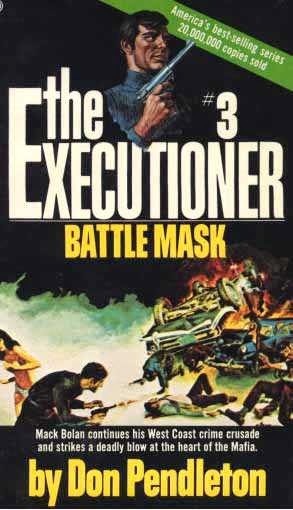 Reflecting on his creation in 1973, Don Pendleton – now universally acknowledged as the father of the modern action/adventure novel – stated, “…styling of the Mack Bolan stories requires a structure for carrying fast-paced hard-hitting action sequences. The writing is punchy, declarative, stirringly graphic. The reach is toward the reader’s belly, designed to evoke visceral response and rousing empathy. This is heroic fiction.”
Reflecting on his creation in 1973, Don Pendleton – now universally acknowledged as the father of the modern action/adventure novel – stated, “…styling of the Mack Bolan stories requires a structure for carrying fast-paced hard-hitting action sequences. The writing is punchy, declarative, stirringly graphic. The reach is toward the reader’s belly, designed to evoke visceral response and rousing empathy. This is heroic fiction.”Here is the conclusion of our interview:
THERE IS A STRONG MORAL THREAD RUNNING THROUGH THE ORIGINAL EXECUTIONER BOOKS. HOW MUCH DID THIS REFLECT DON’S OWN WORLD VIEW?
It very much reflected his world view. Readers often wonder how much of the author, himself, moves onto the pages of his book. A part of us always does. Don had this to say, “Every writer is always working from his own individual world view, and that can become as characteristic as a fingerprint, whatever the subject, so an honest writer cannot conceal himself in the work no matter how hard he may try to do so. So in essence, Mack Bolan is me, operating from the same world view.”
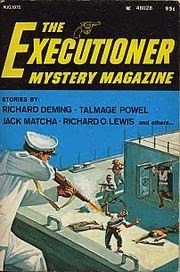 IN SOME OF HIS OTHER WRITINGS, DON DISPLAYED A STRONG SPIRITUAL SIDE. HOW IMPORTANT TO HIM WAS THE EXAMINATION OF THE METAPHYSICAL SIDE OF LIFE?
IN SOME OF HIS OTHER WRITINGS, DON DISPLAYED A STRONG SPIRITUAL SIDE. HOW IMPORTANT TO HIM WAS THE EXAMINATION OF THE METAPHYSICAL SIDE OF LIFE?He considered himself a life-long metaphysical scholar. He loved the wedding of scientific understanding and mystical thought. He explored philosophy, science, the paranormal, including spirit communication, which is the subject of our book, To Dance With Angels. His Ashton Ford Psychic Detective series gave him the opportunity to explore the paranormal in a fictional way. The flip-side of that, is his nonfiction book, A Search for Meaning From the Surface of a Small Planet.
Don even considered his Executioner novels a study in metaphysics. He said, “Some people may say that these books are not examples of metaphysical thought, but they are. Metaphysics grapples with the nature of reality and the Executioner books undertake an examination of the essentially violent nature of nature.”
Personally, I’ve always felt it is the underlying metaphysical theme of Mack Bolan that has kept the readers following Bolan’s war.
THIS IS AN EXCITING TIME FOR THE EXECUTIONER SERIES. HOW LONG HAD YOU BEEN WORKING TOWARD THE E-BOOK RELEASE OF THE FIRST THIRTY-SEVEN BOOKS?
I know how much Don’s work meant to him, so we are very excited to have the original series available as e-books. The last print editions of the original series were done in 1988-1990. For several years, I had wanted to do e-books of the series. Early this year, I had decided to do e-books myself, even knowing it would be a lot of work and time consuming. Open Road Media had been interested in the series for some time, and in July when they inquired again of my publishing attorney, Frank Curtis, and with the idea they would bring them all out at once by year’s end, we went for it. Open Road has been great to work with, and within a short time they had all 37 books ready to go, as promised. I discussed with Open Road cover designer, Mauricio Diaz, what I hoped for with a branded cover, and I’m pleased with his cover designs.
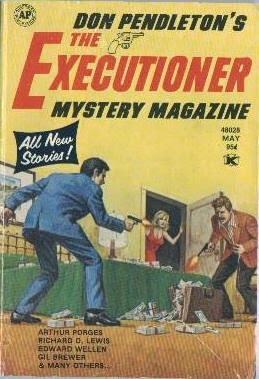 OVER THE YEARS, THERE HAVE BEEN OTHER ATTEMPTS TO BRING THE EXECUTIONER TO THE BIG SCREEN. WHAT IS DIFFERENT THIS TIME?
OVER THE YEARS, THERE HAVE BEEN OTHER ATTEMPTS TO BRING THE EXECUTIONER TO THE BIG SCREEN. WHAT IS DIFFERENT THIS TIME?In the past, twice, Writers Guild strikes interfered with progress and it was shelved and options not renewed. About a decade ago, one deal that sounded good on the surface, was not, and after preliminary negotiation we walked away. Then screenwriter, producer, Shane Salerno came along, not only with a nice deal, but just as importantly from my point of view, with enthusiasm and determination. It was the right deal from the beginning. Salerno also has been a fan of the Bolan books since he was a teenager, and had this dream to one day do Mack Bolan films. He’s now had a lot of Hollywood success as a screenwriter, and a producer, and I also saw his determination in doing the J.D. Salinger project, in which he had a similar long-held dream.
We were also surprised how fast after Shane Salerno’s August announcement that Bradley Cooper, Todd Phillips, and Warner Bros, jumped on it.
 IF THERE WAS ONE THING DON WANTED HIS READERS TO TAKE AWAY FROM HIS BOOKS, WHAT WOULD IT BE?
IF THERE WAS ONE THING DON WANTED HIS READERS TO TAKE AWAY FROM HIS BOOKS, WHAT WOULD IT BE?I believe when you read Don Pendleton you feel his multilayer reach for his reader’s mind. That was his goal, his hope, that when a reader finished the last page and closed one of his books not only would the reader feel entertained, but would be left with something to think about, some new idea to ponder. A meeting of the minds: a meeting of his, the author, with each and every one of his millions of readers all around the world.
He said, “I try to entertain myself with the adventures of my characters, hoping that what entertains me may also entertain others. I am simply a storyteller, an entertainer who hopes to enthrall with visions of the reader’s own incipient greatness.”
Paul, thank you for your interest in Don’s work, and for this opportunity to do this interview.
Thank you, Linda, for taking time from your busy schedule.
For more information on The Executioner, and his creator Don Pendleton, check out the websites below…
http://www.executionerseries.com
http://www.donpendleton.com
Published on January 06, 2015 10:04
December 31, 2014
DON PENDLETON: GODFATHER OF THE MODERN ACTION ADVENTURE NOVEL
 DON PENDLETON: GODFATHER OF THE MODERN ACTION ADVENTURE NOVEL
DON PENDLETON: GODFATHER OF THE MODERN ACTION ADVENTURE NOVEL
PART 1 (OF 2)
THE EXECUTIONER RETURNS
Forty-five years ago, author Don Pendleton's War Against the Mafia, the first novel in what would become the international best-selling The Executioner: Mack Bolan series, was published. The novel hit a nerve with the reading public, bridging the gulf between the hard-hitting pulp magazines of a prior generation and the paperback original format of a more modern – yet still story hungry – audience.
 Earlier in December, 2014, Don Pendleton’s widow, Linda Pendleton, masterminded the first e-book release (via Open Road Media) of the original thirty-seven titles in The Executioner: Mack Bolan series. Originally published from 1969 to 1980, these books are the beating heart of The Executionercanon, which spawned uncountable imitators in the men’s action adventure genre.
Earlier in December, 2014, Don Pendleton’s widow, Linda Pendleton, masterminded the first e-book release (via Open Road Media) of the original thirty-seven titles in The Executioner: Mack Bolan series. Originally published from 1969 to 1980, these books are the beating heart of The Executionercanon, which spawned uncountable imitators in the men’s action adventure genre.
As a series, The Executioner moved from the pen of one man, Don Pendleton, to numerous other scribes for a total of over 425 titles and spawned numerous spinoff series published under the Gold Eagle banner – an imprint of Harlequin Publishing, perhaps better known for their strong presence in the romance genre.
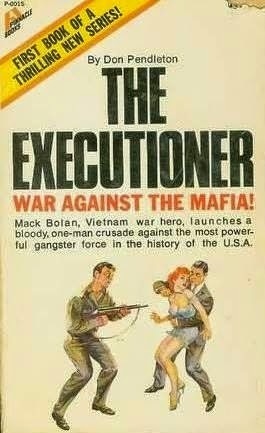 Reflecting on his creation in 1973, Don Pendleton – now universally acknowledged as the father of the modern action/adventure novel – stated, "…styling of the Mack Bolan stories requires a structure for carrying fast-paced hard-hitting action sequences. The writing is punchy, declarative, stirringly graphic. The reach is toward the reader’s belly, designed to evoke visceral response and rousing empathy. This is heroic fiction."
Reflecting on his creation in 1973, Don Pendleton – now universally acknowledged as the father of the modern action/adventure novel – stated, "…styling of the Mack Bolan stories requires a structure for carrying fast-paced hard-hitting action sequences. The writing is punchy, declarative, stirringly graphic. The reach is toward the reader’s belly, designed to evoke visceral response and rousing empathy. This is heroic fiction."
In her blog, Drops of Ink Upon the Page, Linda Pendleton explains, “Don wrote the first novel in the series, War Against the Mafia, out of his desire to express his discomfort with the reaction of many Americans to our soldiers who were dying for our country in the jungles of Vietnam and those coming home to outrageous verbal and physical abuse. So Mack Bolan became Don's symbolic statement. He also became every soldier's voice. Don created a heroic character in Bolan, a true hero who was dedicated to justice. The enemy that Bolan had to fight was no longer on the battlefields of Vietnam but right here on American soil, and that enemy was the Mafia.”
As his guiding principal of writing stories with strong values and an underlying theme of a higher morality, Pendleton explained, "My biggest job throughout writing the series was to keep faith with Bolan–that what he is doing is right. I wanted an enemy beyond redemption–an enemy that all civilized procedures had failed to put down. The Mafia was ready-made. They embodied all the evils of mankind."
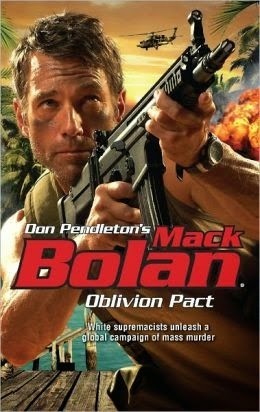 Since 1980, under the auspices of Gold Eagle, The Executioner moved on from fighting the mafia to a new enemy – terrorism. Including several spinoff series – Phoenix Force, Able Team, Stony Man, Mack Bolan, and The Executioner – close to 1,000 books have been published, based on Don Pendleton's original Mack Bolan character.
Since 1980, under the auspices of Gold Eagle, The Executioner moved on from fighting the mafia to a new enemy – terrorism. Including several spinoff series – Phoenix Force, Able Team, Stony Man, Mack Bolan, and The Executioner – close to 1,000 books have been published, based on Don Pendleton's original Mack Bolan character.
Recently, The Executionerseries has been back in the news. Gold Eagle, which published the monthly adventures of The Executioner and its numerous spinoff series, was closed down due to a publishing merger. However, there was also good news – very good news. In August of 2014, it was announced that Hollywood screenwriter and producer, Shane Salerno had acquired the film rights and a film franchise is planned. And soon after, Warner Brothers announced Bradley Cooper to star. The movie is currently fast-tracked for production.
The movie news, coupled with the e-book release of Pendleton’s first thirty-seven Executionernovels featuring Mack Bolan, assure the enduring hero will be with us for a long time to come.
Through the wonders of Facebook, I recently was able to talk with Linda Pendleton about her efforts to get the e-books released, the upcoming movie, and Don Pendleton’s legacy.
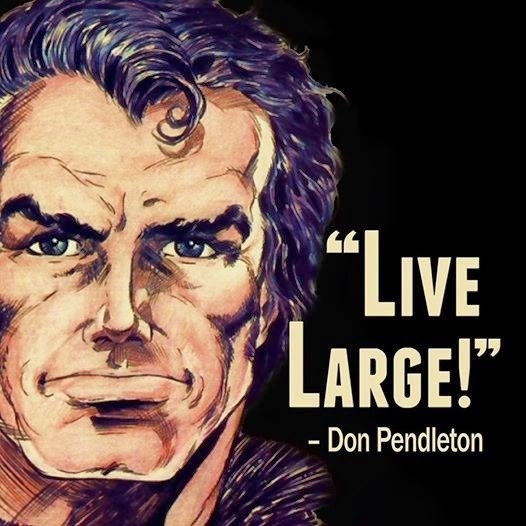 First, please tell us a little about Don himself both as an individual and as the author behind the books.
First, please tell us a little about Don himself both as an individual and as the author behind the books.
Don Pendleton was, like Mack Bolan, a man who could command himself. He was a true gentleman, compassionate and caring, a wonderful and near-perfect blend of the warrior/lover. Don considered life to be a joyous adventure and lived life with enthusiasm and excitement right up to the moment he died. I believe his enthusiasm and excitement for life came across in his writing. A self-educated man, he received his GED while still in the Navy at the end of World War II. That was the extent of his formal education. He was an avid reader from childhood. Even during the War, and later when he returned to duty during the Korean Conflict, he read every chance he had. He once stated, "I have served many long and lonely years aboard ship in war zones, and the only thing that kept me sane during all that enforced loneliness was my access to a good library in which I read, literally, every book on the shelves, even textbooks, and which gave me access to other worlds no other way open to me."
I was fascinated with Don Pendleton, the man, from the first moment I met him, and soon became fascinated with the writer. Out of the hidden crevices of his mind would come multidimensional characters, and as with every writer, bits and pieces of him would come forward to find their place on the written page. I often marveled at his intelligence and his ability to read and absorb so much, whether it be a newspaper article or a scientific journal. He loved people and loved to study them, and often his fictional characters would be composites of persons he had met.
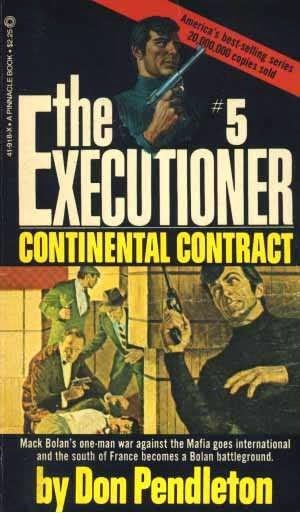 As a writer yourself, did you have any input into the original series or other books Don wrote?
As a writer yourself, did you have any input into the original series or other books Don wrote?
Don and I met and married not long after he had finished writing The Executioner, but we did adapt and script the graphic comic together, War Against the Mafia. Shortly following his death, I adapted and scripted the second graphic comic, Death Squad. I enjoyed working with Mack Bolan.
In 1987, we co-wrote our nonfiction book, To Dance With Angels, and it was published in 1990. We followed that with Whispers From the Soul: The Divine Dance of Consciousness. About that same time, we collaborated on our crime novel, Roulette, the Search for the Sunrise Killer. We enjoyed writing together. I had been married for twenty-five years to a California police officer, who retired out as a Captain, so writing about cops seemed the natural thing to do.
I had little input into Don's Joe Copp, Private Eye or Ashton Ford Psychic Detective series except to read each chapter as it came off the printer, and then to answer his question when he reached about page 75, "Do I have a story?" followed by my question at page 175, "Okay who's the bad guy. It looks like it could be one of several." Then he'd tell me, "I don't know yet." We had a lot of fun with writing. His last Joe Copp novel, Copp in Shock, was a different story, though. It was the sixth book of his Donald I. Fine hardcover publishing contract. He had finished the fifth book and it was about time to start the last book, when, in February, 1991, Don suffered a heart attack. The clot buster he was given resulted in a serious brain hemorrhage. He nearly died, spent weeks in the hospital and had extensive physical and occupational therapy. Two months after he came home, we started writing Copp in Shock. He had already fired his speech therapist as our therapy methods were much better. He was still suffering from dyslexia, peripheral vision loss, and short-term memory problems. I sat at the computer and he told me what to write, often a guessing game to find the right word or phrase. We laughed a lot. By chapter five, he was ready to take over at the computer. I would record each chapter so he could listen to it before starting the next chapter. I was amazed how Don knew all the details needed to wrap up the book, a couple that I had forgotten. You just never know how the brain works. I know his recovery amazed his speech therapist. He took her a copy of several chapters he'd written and she couldn't believe how fast he had recovered. Not only did our humor help his healing, but our determination, and Don's love of writing.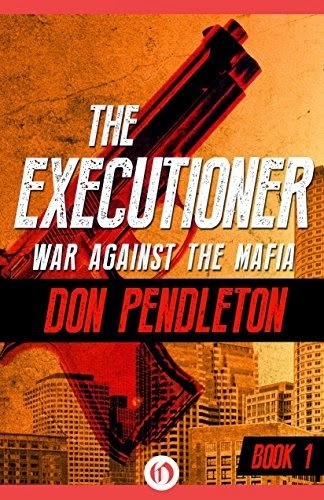 END OF PART 1
END OF PART 1
 DON PENDLETON: GODFATHER OF THE MODERN ACTION ADVENTURE NOVEL
DON PENDLETON: GODFATHER OF THE MODERN ACTION ADVENTURE NOVELPART 1 (OF 2)
THE EXECUTIONER RETURNS
Forty-five years ago, author Don Pendleton's War Against the Mafia, the first novel in what would become the international best-selling The Executioner: Mack Bolan series, was published. The novel hit a nerve with the reading public, bridging the gulf between the hard-hitting pulp magazines of a prior generation and the paperback original format of a more modern – yet still story hungry – audience.
 Earlier in December, 2014, Don Pendleton’s widow, Linda Pendleton, masterminded the first e-book release (via Open Road Media) of the original thirty-seven titles in The Executioner: Mack Bolan series. Originally published from 1969 to 1980, these books are the beating heart of The Executionercanon, which spawned uncountable imitators in the men’s action adventure genre.
Earlier in December, 2014, Don Pendleton’s widow, Linda Pendleton, masterminded the first e-book release (via Open Road Media) of the original thirty-seven titles in The Executioner: Mack Bolan series. Originally published from 1969 to 1980, these books are the beating heart of The Executionercanon, which spawned uncountable imitators in the men’s action adventure genre.As a series, The Executioner moved from the pen of one man, Don Pendleton, to numerous other scribes for a total of over 425 titles and spawned numerous spinoff series published under the Gold Eagle banner – an imprint of Harlequin Publishing, perhaps better known for their strong presence in the romance genre.
 Reflecting on his creation in 1973, Don Pendleton – now universally acknowledged as the father of the modern action/adventure novel – stated, "…styling of the Mack Bolan stories requires a structure for carrying fast-paced hard-hitting action sequences. The writing is punchy, declarative, stirringly graphic. The reach is toward the reader’s belly, designed to evoke visceral response and rousing empathy. This is heroic fiction."
Reflecting on his creation in 1973, Don Pendleton – now universally acknowledged as the father of the modern action/adventure novel – stated, "…styling of the Mack Bolan stories requires a structure for carrying fast-paced hard-hitting action sequences. The writing is punchy, declarative, stirringly graphic. The reach is toward the reader’s belly, designed to evoke visceral response and rousing empathy. This is heroic fiction."In her blog, Drops of Ink Upon the Page, Linda Pendleton explains, “Don wrote the first novel in the series, War Against the Mafia, out of his desire to express his discomfort with the reaction of many Americans to our soldiers who were dying for our country in the jungles of Vietnam and those coming home to outrageous verbal and physical abuse. So Mack Bolan became Don's symbolic statement. He also became every soldier's voice. Don created a heroic character in Bolan, a true hero who was dedicated to justice. The enemy that Bolan had to fight was no longer on the battlefields of Vietnam but right here on American soil, and that enemy was the Mafia.”
As his guiding principal of writing stories with strong values and an underlying theme of a higher morality, Pendleton explained, "My biggest job throughout writing the series was to keep faith with Bolan–that what he is doing is right. I wanted an enemy beyond redemption–an enemy that all civilized procedures had failed to put down. The Mafia was ready-made. They embodied all the evils of mankind."
 Since 1980, under the auspices of Gold Eagle, The Executioner moved on from fighting the mafia to a new enemy – terrorism. Including several spinoff series – Phoenix Force, Able Team, Stony Man, Mack Bolan, and The Executioner – close to 1,000 books have been published, based on Don Pendleton's original Mack Bolan character.
Since 1980, under the auspices of Gold Eagle, The Executioner moved on from fighting the mafia to a new enemy – terrorism. Including several spinoff series – Phoenix Force, Able Team, Stony Man, Mack Bolan, and The Executioner – close to 1,000 books have been published, based on Don Pendleton's original Mack Bolan character. Recently, The Executionerseries has been back in the news. Gold Eagle, which published the monthly adventures of The Executioner and its numerous spinoff series, was closed down due to a publishing merger. However, there was also good news – very good news. In August of 2014, it was announced that Hollywood screenwriter and producer, Shane Salerno had acquired the film rights and a film franchise is planned. And soon after, Warner Brothers announced Bradley Cooper to star. The movie is currently fast-tracked for production.
The movie news, coupled with the e-book release of Pendleton’s first thirty-seven Executionernovels featuring Mack Bolan, assure the enduring hero will be with us for a long time to come.
Through the wonders of Facebook, I recently was able to talk with Linda Pendleton about her efforts to get the e-books released, the upcoming movie, and Don Pendleton’s legacy.
 First, please tell us a little about Don himself both as an individual and as the author behind the books.
First, please tell us a little about Don himself both as an individual and as the author behind the books. Don Pendleton was, like Mack Bolan, a man who could command himself. He was a true gentleman, compassionate and caring, a wonderful and near-perfect blend of the warrior/lover. Don considered life to be a joyous adventure and lived life with enthusiasm and excitement right up to the moment he died. I believe his enthusiasm and excitement for life came across in his writing. A self-educated man, he received his GED while still in the Navy at the end of World War II. That was the extent of his formal education. He was an avid reader from childhood. Even during the War, and later when he returned to duty during the Korean Conflict, he read every chance he had. He once stated, "I have served many long and lonely years aboard ship in war zones, and the only thing that kept me sane during all that enforced loneliness was my access to a good library in which I read, literally, every book on the shelves, even textbooks, and which gave me access to other worlds no other way open to me."
I was fascinated with Don Pendleton, the man, from the first moment I met him, and soon became fascinated with the writer. Out of the hidden crevices of his mind would come multidimensional characters, and as with every writer, bits and pieces of him would come forward to find their place on the written page. I often marveled at his intelligence and his ability to read and absorb so much, whether it be a newspaper article or a scientific journal. He loved people and loved to study them, and often his fictional characters would be composites of persons he had met.
 As a writer yourself, did you have any input into the original series or other books Don wrote?
As a writer yourself, did you have any input into the original series or other books Don wrote?Don and I met and married not long after he had finished writing The Executioner, but we did adapt and script the graphic comic together, War Against the Mafia. Shortly following his death, I adapted and scripted the second graphic comic, Death Squad. I enjoyed working with Mack Bolan.
In 1987, we co-wrote our nonfiction book, To Dance With Angels, and it was published in 1990. We followed that with Whispers From the Soul: The Divine Dance of Consciousness. About that same time, we collaborated on our crime novel, Roulette, the Search for the Sunrise Killer. We enjoyed writing together. I had been married for twenty-five years to a California police officer, who retired out as a Captain, so writing about cops seemed the natural thing to do.
I had little input into Don's Joe Copp, Private Eye or Ashton Ford Psychic Detective series except to read each chapter as it came off the printer, and then to answer his question when he reached about page 75, "Do I have a story?" followed by my question at page 175, "Okay who's the bad guy. It looks like it could be one of several." Then he'd tell me, "I don't know yet." We had a lot of fun with writing. His last Joe Copp novel, Copp in Shock, was a different story, though. It was the sixth book of his Donald I. Fine hardcover publishing contract. He had finished the fifth book and it was about time to start the last book, when, in February, 1991, Don suffered a heart attack. The clot buster he was given resulted in a serious brain hemorrhage. He nearly died, spent weeks in the hospital and had extensive physical and occupational therapy. Two months after he came home, we started writing Copp in Shock. He had already fired his speech therapist as our therapy methods were much better. He was still suffering from dyslexia, peripheral vision loss, and short-term memory problems. I sat at the computer and he told me what to write, often a guessing game to find the right word or phrase. We laughed a lot. By chapter five, he was ready to take over at the computer. I would record each chapter so he could listen to it before starting the next chapter. I was amazed how Don knew all the details needed to wrap up the book, a couple that I had forgotten. You just never know how the brain works. I know his recovery amazed his speech therapist. He took her a copy of several chapters he'd written and she couldn't believe how fast he had recovered. Not only did our humor help his healing, but our determination, and Don's love of writing.
 END OF PART 1
END OF PART 1
Published on December 31, 2014 07:50
December 19, 2014
GOT PULP!
 GOT PULP?
GOT PULP?I was asked the other day to explain what makes pulp storytelling different from other types of fiction. My kneejerk reaction was to claim, it’s hard to define, but I know it when I read it – which does little to answer the question. I’ve since thought a lot about what constitutes the pulp style of storytelling, which engenders both excoriating scorn from critics and fanatical devotion from acolytes.
By now, most readers know the term pulp was coined in reference to the thousands of inexpensive fiction magazines whose heyday spanned the 1920s through the 1950s. Printed on cheap wood pulp paper, the pulps were typically 7 inches by 10 inches in size, 128 pages long, and sported eye grabbing, luridly colored covers, and ragged, untrimmed edges. Today, the original pulps are more often collected for their gaudy covers than for the fluctuating quality of the words in between.
At the height of their popularity there were hundreds of pulp magazine titles gracing the newsstands each week. The demand for stories was as voracious as the pay per word was cheap. To make a living, a writer selling stories to the pulps had to be a word machine, churning out prose for a quarter to a half cent per word. The result of this constant demand was a straightforward, often formulatic, style of writing designed to entertain a vast audience of everyday, hardworking, folks looking for vicarious thrills and chills to escape the humdrum of their daily lives.
The pulps were also a refiner’s fire for many writers who are household names today – Raymond Chandler, Dashiell Hammett, Louis L’Amour, John D. MacDonald, and others. To these men belonged the battered typewriters and hard drinking tropes, which themselves have become a cliché within the public conscious.
There were also giants of the pulp writing field whose names are not as familiar, but whose characters have gone on to become iconic examples of pop culture – Robert E. Howard’s Conan The Barbarian, Edgar Rice Burroughs’ Tarzan, Walter B. Gibson’s The Shadow, Lester Dent’s Doc Savage, to name just a few, all started in the pulps. We all know their famous creations, but most would look blank if asked who the creators were.
The downside of the insatiable demand for stories to fill the pages of pulp magazines was it also guaranteed much of what was published was slapdash gruel of little to no lasting impact. It is this explosion of dross that gives pulp dismissing critics a place to hang their clichéd hats. However, the beating heart of the true pulps – the best of the stories and characters born within their pages – has shined for almost a century of popular culture.
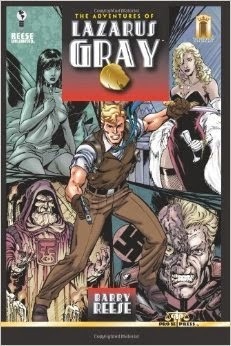 Pulp has experienced a number of waxings and wanings over the decades, all leading to the current eruption of the New Pulp movement. Pulp in this new millennium encompasses not only a resurgence in reprints of the best of the original pulp tales, but new characters and stories, created in the pulp style, by some of the best up and coming scribes, developing their writing chops in the same way as their counterparts once did in the original pulps – check out Barry Reese’s Lazarus Grayor The Rook series, Derrick Ferguson’s Dillon tales, or my own Fight Card series for just a few examples.
Pulp has experienced a number of waxings and wanings over the decades, all leading to the current eruption of the New Pulp movement. Pulp in this new millennium encompasses not only a resurgence in reprints of the best of the original pulp tales, but new characters and stories, created in the pulp style, by some of the best up and coming scribes, developing their writing chops in the same way as their counterparts once did in the original pulps – check out Barry Reese’s Lazarus Grayor The Rook series, Derrick Ferguson’s Dillon tales, or my own Fight Card series for just a few examples.So, what is this pulp style of writing? What makes literature snobs turn up their noses at the mention of pulp?
First and foremost, pulp storytelling is for the masses. It is accessible, not particularly deep or thought provoking, and gets to the heart of a tale with simple, descriptive, action filled words. It is storytelling at its purest, capturing the imagination, taking the reader outside of themselves and dropping them into a world of fantastic slightly larger than life characters.
A lot of what passes for thriller writing today, even those on the bestseller list, are pulp inspired, yet for me they miss the point, consisting of bloated filler designed to turn books into 400 – 700 page doorstops under the false assumption more is better. If you’re like me, you don’t have the time or patience to plow through 700 pages to read a story better served in 300 pages – or far less.
The writers who wrote for the pulp magazines back in the day understood this. Their audience wanted stripped down yarns filled with action, twists and turns, all with the point of providing reader satisfaction.
 In the 1930s, Lester Dent, creator of Doc Savage and The Avenger, famously shared his Master Fiction Plot formula for a 6,000 word pulp tale, which he claimed had never failed him. If studied in depth (http://tinyurl.com/94vtmh), it provides a concise insight into what makes a successful pulp-style story. To break it down, I refer to iconic author Michael Moorcock, who summarized Dent’s formula to aspiring authors stating, "Split your six-thousand-word story up into four fifteen hundred word parts. Part one, hit your hero with a heap of trouble. Part two, double it. Part three, put him in so much trouble there's no way he could ever possibly get out of it...All your main characters have to be in the first third. All your main themes and everything else has to be established in the first third, developed in the second third, and resolved in the last third."
In the 1930s, Lester Dent, creator of Doc Savage and The Avenger, famously shared his Master Fiction Plot formula for a 6,000 word pulp tale, which he claimed had never failed him. If studied in depth (http://tinyurl.com/94vtmh), it provides a concise insight into what makes a successful pulp-style story. To break it down, I refer to iconic author Michael Moorcock, who summarized Dent’s formula to aspiring authors stating, "Split your six-thousand-word story up into four fifteen hundred word parts. Part one, hit your hero with a heap of trouble. Part two, double it. Part three, put him in so much trouble there's no way he could ever possibly get out of it...All your main characters have to be in the first third. All your main themes and everything else has to be established in the first third, developed in the second third, and resolved in the last third."I love the lyricism of Jane Austen and Dickens, the thought provoking works of Thoreau, Asimov, and Neville Shute, and the expansive panoramas painted by Larry McMurtry and Hammond Innes. My reading vistas are as wide as they are eclectic, but pulp always provides the spice and zest that keeps my readers synapsis firing on all cylinders. Pulp is fiction stripped to its essentials, storytelling in its most raw and powerful form. It is engaging, enigmatic, and always entertaining.
Have you been pulpedlately?
Published on December 19, 2014 20:57
PULP TRACKS!
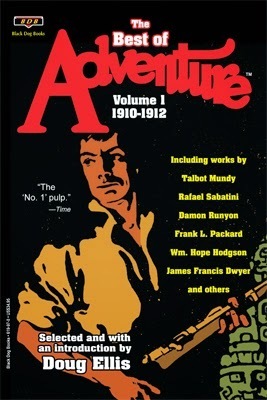 PULP TRACKS!
PULP TRACKS!With the explosion and growing popularity of the New Pulp movement, the vast changes in the world of publishing have also made it possible – and profitable – to reprint collections of many of the original pulp series, which once graced the newsstands behind lurid, eye-catching covers.
Revered pulp historian Ed Hulse has stated there were over 1,100 individual pulp magazines published during the pulp heyday from the ‘20s through the ‘50s, with each of those titles published either weekly, bi-weekly, or monthly, with each containing ten to a dozen stories in each issue. I’d need a calculator and a slide rule to do the math, but let’s just say that’s a lot of pulp…
For the new reader curious as to what the fuss is all about, it can be hard to know where to start. The problem with the hug mass of original pulp and even the large number of current reprints is much of it is dross – forgettable filler published simply to feed the voracious demand. There is also a lot of average tales – readable, but not strong enough to explain the lasting legacy of pulp.
However, there are also – certainly – enough stories and characters with the spark of brilliance to justify that lasting legacy. The problem for the discerning pulp neophyte is to be able to pluck it from the current swirling pulp whirlwind.
While other pulpsters will wax eloquently about the justifiable popularity of the hero pulps – featuring such characters as The Shadow, Doc Savage, The Avenger, Tarzan, and more – my own expertise and enjoyment comes from those pulps featuring stories from the high adventure genre. The reigning pulp titles in the field were Argosy, Adventure, and Short-Story. Collections of tales from these magazines highlight the best of the best in both authors and characters. For a reader looking to escape into thrilling adventures set in faraway locals, here are a few solid starting points.
Black Dog Books, one of the premiere publishers of pulp reprints in beautifully bound trade-paperbacks, has produced two volumes (with more to follow) featuring The Best of Adventure magazine. Edited by Doug Ellis, these collections include stories by the best of the best – Talbot Mundy, H. Bedford-Jones, Rafael Sabatini, and many other writer who were once household names. Volume 1 contains one of the single greatest pulp adventure yarns, Talbot Mundy’s, The Soul of a Regiment, which never fails to give me chills every time I read it.
The second volume of The Best of Adventure includes The Getting of Boh Na-Ghee, a cracking story set in Burma by Gordon MacCreah. Known for the verisimilitude of his African set stories, MacCreah’s expertise has been captured by another top notch pulp-centric publisher, Altus Books, who have reprinted a two volume collection featuring MacCreah’s most popular character Kingi Bwana.
 The Lost End of Nowhere: The Complete Tales of Kingi Bwana Volume 1 and Unprofitable Ivory: The Complete Tales of Kingi Bwana Volume 2 unleash the magic behind the words, “Anything can happen in Africa!” Big game hunter, trader and safari guide King, known all over the Dark Continent as Kingi Bwana, together with his two loyal companions – the deadly Masai warrior Barounggo and the wizened, cunning Hottentot Kaffa – battle slave traders, ivory poachers, gold smugglers, arms traffickers, evil witch doctors, and secret societies in the savanna and jungle of Central East Africa. These stories, tempered by the author’s firsthand knowledge of Africa transport the reader to a world long vanished.
The Lost End of Nowhere: The Complete Tales of Kingi Bwana Volume 1 and Unprofitable Ivory: The Complete Tales of Kingi Bwana Volume 2 unleash the magic behind the words, “Anything can happen in Africa!” Big game hunter, trader and safari guide King, known all over the Dark Continent as Kingi Bwana, together with his two loyal companions – the deadly Masai warrior Barounggo and the wizened, cunning Hottentot Kaffa – battle slave traders, ivory poachers, gold smugglers, arms traffickers, evil witch doctors, and secret societies in the savanna and jungle of Central East Africa. These stories, tempered by the author’s firsthand knowledge of Africa transport the reader to a world long vanished.I’ve only just discovered the tales of Kingi Bwana myself, but I enjoyed and was fascinated by every tale. I also found them surprisingly modern in the main character’s attitude and treatment of indigenous Africans and scorn for the trappings of the British overlords.
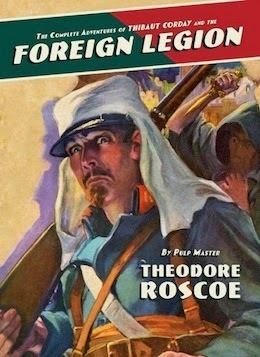 Some of my personal pulp favorites are the Foreign Legion stories from the battered typewriter of Theodore Roscoe. Altus Press has produced four volumes to give us The Complete Adventures of Thibaut Corday and the Foreign Legion. The stories in Better than Bullets (volume 1), Toughest in the Legion (volume 2), The Heads of Sergeant Baptiste (volume 3), and The Kid and the Cutthroats (volume 4) are all narrated by the ancient and querulous Foreign Legion campaigner Thibaut Corday. Corday spends his days smoking and drinking in small French cafes until he is nudged into spinning another fantastical yarn about his life as a Legionnaire. One of my favorites is The Wonderful Lamp of Thibaut Corday, a variation on the story of Aladdin’s lamp which had me on the edge of my seat.
Some of my personal pulp favorites are the Foreign Legion stories from the battered typewriter of Theodore Roscoe. Altus Press has produced four volumes to give us The Complete Adventures of Thibaut Corday and the Foreign Legion. The stories in Better than Bullets (volume 1), Toughest in the Legion (volume 2), The Heads of Sergeant Baptiste (volume 3), and The Kid and the Cutthroats (volume 4) are all narrated by the ancient and querulous Foreign Legion campaigner Thibaut Corday. Corday spends his days smoking and drinking in small French cafes until he is nudged into spinning another fantastical yarn about his life as a Legionnaire. One of my favorites is The Wonderful Lamp of Thibaut Corday, a variation on the story of Aladdin’s lamp which had me on the edge of my seat.There are many other pulp reading choices out there, but the above titles will give anyone a feel for the genre along with a quickening of their pulse and a longing for adventures of their own.
Published on December 19, 2014 20:51
WHIPLASH WRITING!
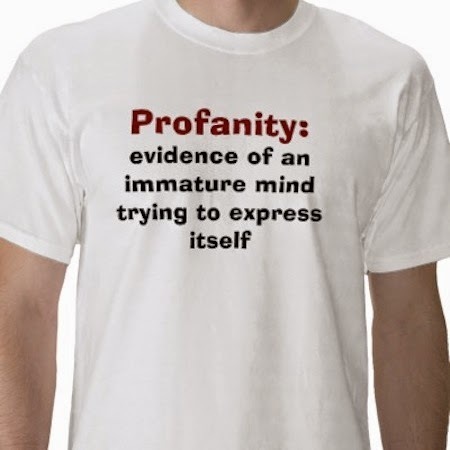 WHIPLASH WRITING!
WHIPLASH WRITING!I’ll get this clear upfront – I saw the movie Whiplash recently and thought it was brilliant. The story of Andrew (Miles Teller), a budding jazz drummer at a prestigious New York music school and his sadistic mentor, Terrence Fletcher (an amazing J. K. Simmons), was a riveting, disturbing, rollercoaster ride coming off the rails to the beat of persistent percussion. By the final explosive twist and amazing musical finale, I came away emotionally rung out and in awe.
My column today, however, is not about the brilliance of the film or even to convince you to see it, but to talk about the pervasive use of the F-bomb and a raft of other explicatives and sexually explicit references, which almost undermined the power of Whiplash’s story. There are so many people to whom I would like to recommend this film, but can’t do so in good conscious.
This isn’t about me being a prude. I was able to get beyond the language and take away from the film a poignant experience. Still, every time J.K. Simmons’ character Terence Fletcher began another explicative laden rant, the writer in me wanted to scream because the profanity was stealing away the destructive power of the screed.
Anyone who ever attended an Eddie Murphy concert in the eighties came away realizing that by the time Eddie had dropped the 800thF-bomb, the word itself held no power – it had become innocuous and weak. Profanity used in public at the top of the lungs became the go-to escape for every standup comedian whose funny lines were falling on deaf ears. Apparently the theory of the times was even a lame joke is funnier if you use the F-bomb three times.
What I believe is profanity is lazy writing. It is camouflage for the weak expression of thought, grist, and point. I’m not standing on my soapbox here without experience. I was once as guilty of anyone else of using a cacophony of explicatives in my writing.
My argument for using profanity was it was the way people talked. An F-bomb was a shorthand way of showing somebody was upset. How could you be sure the reader got your point if you didn’t make it clear by exploding an explicative?
Frankly, all of those arguments are bull****, er, excuse me, invalid. Dialogue in a novel or a screenplay, no matter how natural it sounds, has nothing in common with how we speak in real life. Everyday dialogue is filled with broken sentences, filler words, ers, uhhms, and inconsistencies…all made whole via physical gestures, tone and intonation. All of which goes out the window when writing tight, meaningful, dialogue in a screenplay or novel.
If you can’t convey emphasis or emotional upset in your writing without resorting to profanity, you are shortchanging your reader. You are also losing the opportunity to enrich and deepen your characters, to layer the narrative of your writing. By not relying on easy, pervasive, profanity to hide lame dialogue, you are forced to find better, more creative ways for your characters to interact, making your pages come alive.
When I had the opportunity twenty years later to rewrite the manuscript of my profanity sprinkled first published novel, Citadel Run, in preparation for republication as an e-book – under the title Hot Pursuit – I made a conscious effort to excise the explicatives. In doing so, I found my skills as a writer had sharpened over the intervening years. It was easy to dump the F-bombs, and other emotionally blunting profane words, in favor of incisive cutting phrases, which gave a new sparkle and ingenuity to my dialogue.
I am not maintaining there is no place for profanity in your work. In Whiplash there is a seminal scene where the young drummer, Andrew, is emotionally forced over the edge and attacks his mentor. As he is dragged away, Andrew’s mental and physical state is such that cogent thought is almost impossible. As Andrew throws the only two words he can conjure – F*** you! F*** you! – at his nemesis, the audience feels the pain behind those words and instinctively understands they would be screaming the exact same thing under the circumstances. The explicatives hit like a one two punch, which would have been even more devastating had the F-bombnot been launched over and over throughout the film’s earlier scenes.
Bottom line: Less is more. When you are tempted to cheat yourself and your reader by using profanity as a crutch, dig down and find the real voice of your characters. Save those explosive words as if they were the very last grenades in your arsenal. Use them only when they will have the devastating effect of an atom bomb and not the wasted effort of a wildly sprayed machinegun.
Published on December 19, 2014 20:47
December 18, 2014
MYSTERIOUS PEEVES!
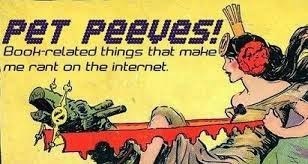 MYSTERIOUS PEEVES!
MYSTERIOUS PEEVES!Recently, I wrote about the early mystery collaborative known as DAPA-EM, an Amateur Press Association publication consisting of (at its height) thirty-five separate mystery newsletters bound together and sent out to members every two months. While much of the conversation within DAPA-EM’s pages was of literary merit, there was also a lot of fun nonsense about pet peeves within the mystery genre.
Some of these irritations revolved around cover art. It was collectively decided in a tongue-in-cheek manner to never to read books with a swastika on the cover (which always seemed to indicate over the top purple prose within the pages). Impaled fruitcovers also came in for a share of mockery during a time period in which they abounded, although there were one or two contributors who felt these spectacularly uninventive covers were actually collectible. I have no doubt the current popularity of cats on covers and bad, repetitive, generic, clip-art covers would be eviscerated if DAPA-EM was still publishing.
The standard clichés of mystery writing were often whacked around like errant tennis balls with a sum zero effect of making any of them disappear. In fact, like tribbles on the Enterprise, genre clichés have a way of multiplying exponentially – not only are many of the old ones still around (writers still put silencers on the end of revolvers, and there is still an ever growing roll call of defectivedetectives), but many new clichés have also been established.
Quite naturally, different readers are more accepting of some genre conventions than others. What doesn’t bother one mystery fan can drive another to fits of apoplexy (such as silencers on revolvers). However, aside from the aforementioned S-on-Rs, here are a few of clichés in the current incarnation of the mystery genre guaranteed to make me personally throw a book across a room – which, apparently, is frowned upon in the middle of a bookstore.
Before I begin, I need to make it clear, I’m going to overlook cat mysteries with cutesy titles, dog mysteries with cutesy titles, and mysteries with recipes, since I don’t want to get the dangerous folks who enjoy them and buy them by the barrow load mad at me.
Instead, let’s start off with serial killers…especially brilliant, evil, serial killers who are smarter than the broken down, anguished, detectives who are the only ones available to chase them. I am so done. Hannibal Lecture is the standard. Val McDermid, in particular, and one or two other scribes get a pass because they are brilliant writers who manage to take the cliché and twist it into something new and frightening. In general, serial killers are drab, boring, sick, sordid, and screwed up. Yes, they exist, but there aren’t enough of them to go around (thank goodness) for every mystery to contain one – especially now Dexter has killed off four season’s worth before HBO killed Dexter. The other issue here is the attempts to make serial killers more and more horrible and scary by making their murders more and more depraved. Stop it! Stop it! Stop it! Stop describing in great detail killers carving off faces and desecrating corpses. Enough!
Parker has Hawk. Elvis Cole has Joe Pike. Rafferty has Cowboy (if you don’t know who the last duo are then do some research – you’re in for a treat). Beyond those three sets of characters, let’s have no more invincible psycho partners for the hero to turn to when he doesn’t want to do his own dirty work because of his moral code, or needs somebody to haul his cookies out of the fire.
Terrorists…especially brilliant, evil, terrorists. See serial killers above for further. If I see the word terrorist on a book, I immediately put it down before it explodes. These books are particularly dangerous if the hero is a burned out, disgraced, agent who nobody believes, and the heroine is statuesque and wears glasses to show how brilliant she is.
Moving on …
Out of control Sherlockian deductive reasoning. Sherlock is brilliant. However, he is the only character who should be allowed to deduce a killer’s identity from his hat size and a butt print left behind on a damp park bench. Stop giving us deductive savants who solve crimes by their esoteric knowledge of sixty-seven types of bananas while displaying the social skills of a sociopathic chimpanzee with Tourette syndrome – no matter how high functioning.
Penniless private eyes with a drinking problem. It was a cliché back in the day. It’s worse than a cliché today. And while we are on the subject of private eyes, I’m totally over vampire private eyes, zombie private eyes, werewolf private eyes, and any other supernatural variation thereof. Simon Green, Jim Butcher, and Patricia Briggs et al. have mined this twist to death and – not to put too fine a point on it – beyond.
Computer hackers who can get into any computer anywhere, anytime, within thirty seconds. Aaaaaaagh! Even the North Koreans and the Chinese can’t do it with any kind of consistency. If they could, you wouldn’t be reading this because the Internet would be crashed, your money would be worthless, the world would be in chaos, and we would have new Asian overlords.
Rouge cops…We have enough problems with police accountability. Don’t get me started.
Enhanced surveillance video and digital photographs. Not even NASA could enhance the stuff I routinely saw as evidence. Most of it looked like Bigfoot in a snowstorm. If the pixels don’t exist, you can’t enhance a photo of the tattoo on a hand caught in the reflection of the rain spatter window of a bus driving by.
And what is with all the family angst in mystery fiction. Why does every cop have to have a bad marriage, horrendous relatives, or vicious ex-spouses? Also, the number of single parents with bratty kids who expect their mystery solving parent home on time to take them to ball games and parties is getting out of control. I don’t want to read about family torment for chapter after chapter, I want fictional detectives to do something clever, say something clever, catch the bad guy and save the world. If a fictional detective has a problem taking care of his/her life responsibilities maybe he should be the focus of a self-help book and not a mystery.
Here is a cliché that make me cringe from my toenails to the tips of my rapidly receding hair. Detectives who put their gun down because their partner is being held hostage with a gun to his/her head. The first time I worked with a new partner, we would always discuss what to do if he/she was taken hostage with a gun to his/her head. It was always very clear. I was never going to put my gun down as it’s the best way to get us both killed. If my partner had screwed up bad enough to be taken hostage with a gun to his/her head, they had less than five seconds to make a move to give me a better shot or I was taking the one I had available. This cut both ways. If I was the one who screwed up, it was up to me to unscrew the situation and give my partner a better chance. Welcome to the real world folks.
So there’s the tip of my mystery peeve list. I love the mystery genre, but I have a curmudgeonly list long enough to fill another couple of columns. I bet you do as well, so feel free to leave your pet mystery peeves in the comments below.
Published on December 18, 2014 07:44
December 16, 2014
ELEMENTARY. MY DEAR APA!
 ELEMENTARY. MY DEAR APA!
ELEMENTARY. MY DEAR APA!Back in the prehistoric times before the Internet – when dinosaurs roamed the earth, the West was wild and the East was still the mysterious Orient – mystery fandom wasn’t a simple matter of keeping abreast of daily blog updates and Yahoo group digests…it had to be earned.
I’m not kidding…
In 1973, DAPA-EM (which stood for Elementary, My Dear APA – don’t ask, because I don’t know the origin of the name) became the first and only APA (Amateur Press Association) devoted to the mystery genre.
APAs are limited membership groups whose members produce copies of their amateur magazines, which are then sent to an Official Editor. The Official Editor then collates the magazines, mails them to the members, keeps track of the APA’s finances (dues to cover mailing expenses), maintains a waiting list of contributors, and makes sure current contributors meet the requirements for minimum activity – which in the case of DAPA-EMwas four pages of mystery related information or research (three of which had to be original material) every four months. Since issues were gathered and sent out every two months, a contributor could miss only one issue before facing an inactivity deadline.
This was hardcore, chisel and stone, tape and paste, mimeograph machine, surreptitious Xeroxing at work, seat of the pants publishing…and it was probably the most fun I’ve ever had in the mystery genre.
DAPA-EM was originally founded with six contributors. By the time I joined in the late 70’s, DAPA-EM was up to its limit of thirty-five members with a half-a-dozen names on the waiting list. For a number of years, I published my contribution, The Thieftaker Journals, full of reviews and explorations of – mostly – hardboiled detective fiction. In my November 1983 issue, I even had the honor of publishing a controversial story, The Oldest Killer, by Edgar Award winning author Dennis Lynds, which went on to much acclaim and cemented a friendship of many years.
Critical appreciation of the mystery genre was in its infancy during the early days of DAPA-EM. Several mystery newsletters, including Marv Lachman's The Mystery Lover's Newsletter and Al Hubin's The Armchair Detective had laid the groundwork fo DAPA-EM, but the pivotal works of the genre were still on the horizon. The first of these works to have lasting impact (and still sits in a place of honor on my bookshelves – as do the others) was the Encyclopedia of Mystery & Detectionby Chris Steinbrunner and Otto Penzler (who has now become the acknowledged professor emeritus of mystery research and criticism). Al Hubin’s ambitious Bibliography of Crime Fiction followed in 1978, and John M. Reilly’s epic Twentieth Century Crime and Mystery Writerscame two years later in 1980. But before all these, there was the collaboration that was DAPA-EM.
And what a collaboration it was. Members of DAPA-EM spanned America with submissions also coming from Canada, Australia, and England. At the height of DAPA-EM’s existence, it was not unusual for two-thirds of the membership to show up, live and in person (except for George Kelley – an inside DAPA-EMjoke), at the yearly Bouchercon mystery convention. There is no longer a DAPA-EM wild party room set aside in the convention hotel (we still can’t talk about some of the scandals), but just a few weeks ago, I attended the 44thincarnation of Bouchercon in Long Beach where I crossed paths with several long time DAPA-EM friends.
While the reviews and articles, which made up the bulk of most DAPA-EM entries, were interesting, it was the exchanges in the letter pages where gold and friendship was to be found. Here tales of booking experiences, convention antics, personal travels, and personal lives abounded – much in the same way the connections made in the Campfire section of the revered pulp Adventure raised that magazine to a level of reader connection above all others.
DAPA-EMcontributors were a family and, like any such grouping, there were dysfunctions and arguments – both personal and literary. Sometimes, it could get ugly, and once or twice the heat from the pages could be felt through the mailing envelope. Rabid Mets fans and baseball had nothing on the contributors of DAPA-EM and the mystery genre.
Those upsets, however, were minor glitches now lost to the winds of time. More importantly, through the pages of DAPA-EM, I established cherished friendships, acquaintances, and contacts, which have continued across the decades and are still viable today. A number of DAPA-EM contributors are no longer with us, and while I may only hear occasionally – usually through the wonders of Facebook – from my buddies Bill Crider, Cap’n Bob Napier, Art Scott, and others still on this side of the sod, those early days of writing, publishing, and sharing of our love for the mystery genre still bind us together.
Every two months when my copies of the magazines bound into DAPA-EM arrived in my mailbox – usually after a frantic rush to get my own entry finished, collated, and submitted – I knew I was in for hours of enjoyment, spending time learning about new books and writers in the genre I loved, and catching up with thirty-four of my best friends in the world of mystery – many of whom have gone on to successful writing careers.
Work and commitment are needed to keep up with a semi-monthly publishing schedule of even a small publication. Original research and writing had to be done aside from the dexterity needed with glue sticks and those old fashioned things called typewriters. DAPA-EM not only represented the best of the mystery genre, it also represented a massive collective effort on the part of its contributors.
In February 2011, after 216 issues, DAPA-EM gave up the ghost to the siren call of blogs and social networking. I love physical books, but I’ve shifted to mostly (only mostly) e-books with ease. However, I still miss DAPA-EM, the work it entailed and the never to be had again rewards it provided. I recently read through some old issues and marveled and the breadth of knowledge still contained there.
What do you say, Bill…Art…are any of us crazy enough to resurrect DAPA-EM for a final retrospective/tribute issue? Just kidding – seriously, just kidding…
Published on December 16, 2014 13:44



